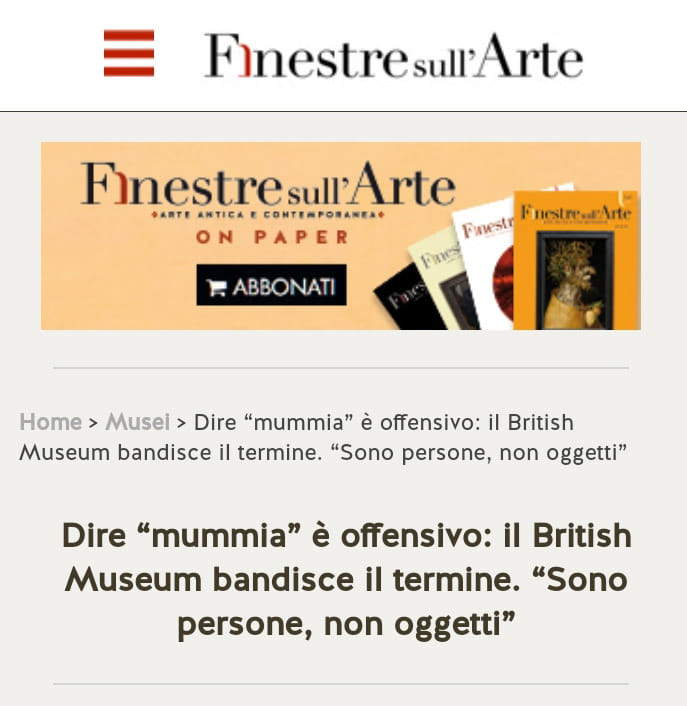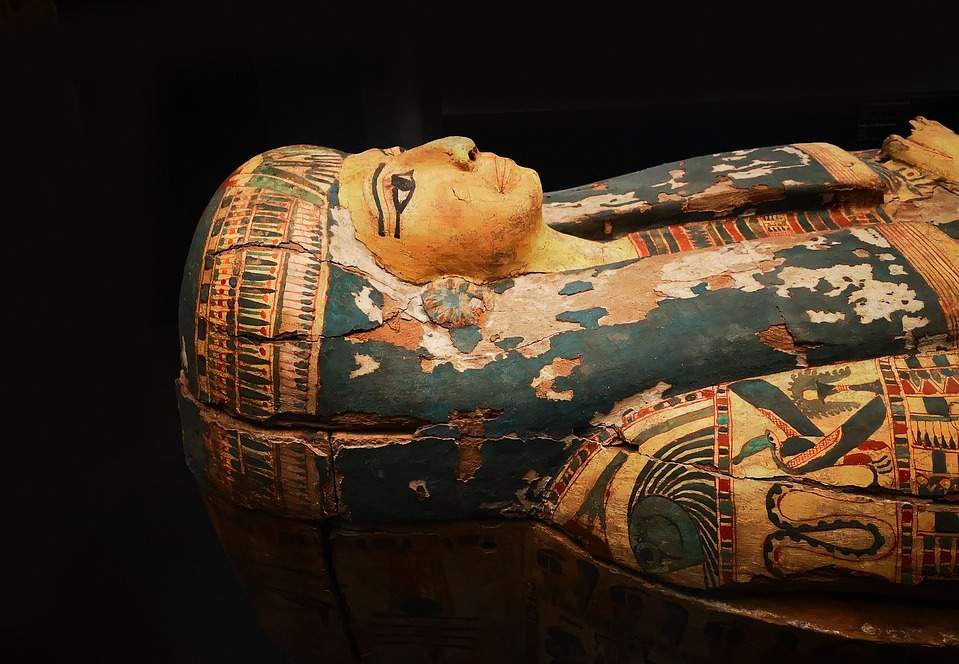About the term "mummy" in British museums
WARNING - 02/02/2023 8:14 pm. Due to a verification issue, the first editors of this news story conveyed erroneous and decontextualized content. We apologize to all our readers: Finestre Sull’Arte puts accuracy in reporting the news first. Below is the corrected news story and at the bottom the headline of the first version in a screenshot, lest the content end up indexed and may further confuse the reader.
There is debate in England about the term"mummy," which is considered by some to be dehumanizing to people who have been dead, even though they have been dead for three thousand years now. It would then be better to use the expression"mummified person" or"mummified remains,“ not least because with the word ”mummy" one would, according to these museums, return to Britain’s colonial past. Reviving the statements of museum officials is the Daily Mail, later picked up by the specialist news outlet Artnews.
The British Museum says it uses the latter expression, namely “mummified remains,” to emphasize to the public that they are looking at people who were once alive. A spokesperson for the London museum headquarters said that the museum has not banned the use of the term “mummy” and that it is still in use in their halls, but that in their latest exhibits they have used the expression “mummified remains of,” including the name (if known) of the person who was mummified, thus emphasizing that the mummified remains are of people who were once alive. "The research undertaken by the museum over the past decade has focused on individuals, looking at how they lived and prepared for the afterlife. This approach is intended to bring visitors closer to the people who lived along the Nile Valley," he added.
Newcastle’s Great North Museum: Hancock says it has adopted the new terms for its Irtyru mummified woman, dating from about 600 B.C., to acknowledge the history of colonial exploitation and to give her the respect she deserves. “The word mummy,” said Jo Anderson of the Great North Museum, "has been used in English since at least 1615, but some say it has a colonial past in that it comes from the Arabic word ’mummiya,’ meaning ’bitumen,’ which was used as an embalming substance. Many mummies came to Britain in imperial times, especially during the Victorian age, where there was a tendency to discard them."
As for the National Museum of Scotland, "where we know the name of an individual we use it, otherwise we use ’mummified man, woman, boy, girl or person’ because we refer to people, not objects,“ said a spokeswoman for the Scottish museum. ”The word ’mummy’ is not incorrect, but it is dehumanizing, while the use of the term ’mummified person’ encourages our visitors to think of an individual."

 |
| About the term "mummy" in British museums |
Warning: the translation into English of the original Italian article was created using automatic tools. We undertake to review all articles, but we do not guarantee the total absence of inaccuracies in the translation due to the program. You can find the original by clicking on the ITA button. If you find any mistake,please contact us.




























